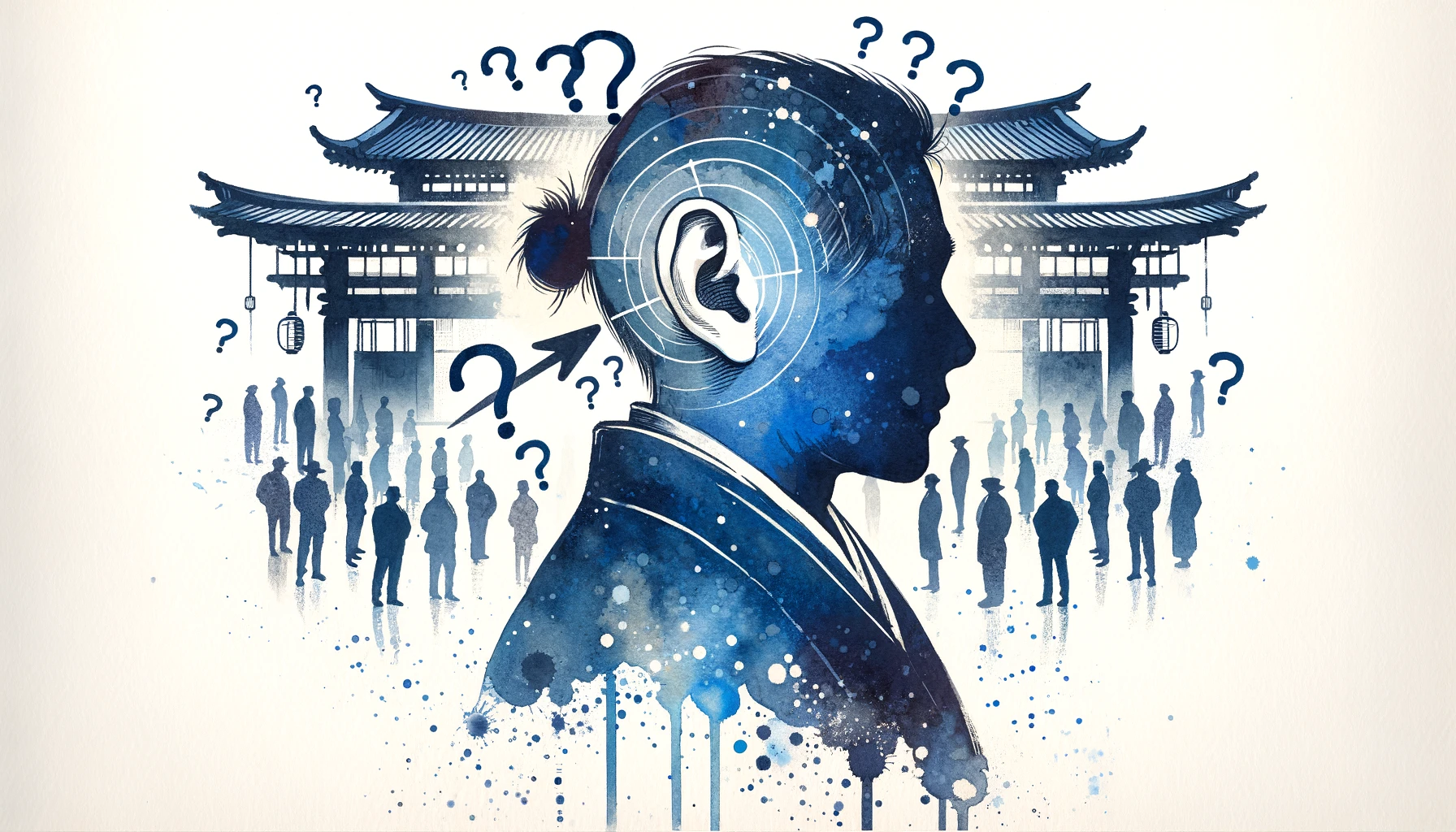Do you want to learn Japanese as a beginner? It's easier than you think - you just need motivation and the right plan! I'll give you that here and show you how to succeed quickly!
In my experience, many people focus on the wrong things: They struggle for years with vocabulary cramming, grammar and practice exercises without seeing real progress - I was one of them! And after more than ten years I found the solution that helps everyone advance faster from the beginning and have more fun doing it!
Learn Japanese Step-by-Step
How can I learn Japanese?
Successful Japanese learners learn from the beginning by watching series and anime, reading books and manga, and listening to podcasts and more that they don't yet understand. But actively, not just passively! Everything else like explicit vocabulary and grammar learning is subordinate to this. It may sound complicated at first, but there's a simple and structured approach to this method!
This approach is called "immersion": And in the course I'll explain to you how you can follow it step by step - whether you're a beginner or advanced learner - with all details to make quick progress! From the basics to fluent speaking. No tricks, no miracles - just proven methods that demonstrably work.
Learn Japanese for beginners
The course is based on natural language acquisition: Instead of traditional textbooks, you use novels, series and similar things! And this method has been thoroughly researched! Experts like Krashen, Brown and Cambridge University explain this! However, it's not widely used yet.
This is how you achieve good language skills in just a few months! Of course, you won't be fluent immediately. But the more you learn, the easier it becomes. After one to two years, you'll understand most of it. So you're significantly faster than with traditional courses, which in the same time usually only cover the basic JLPT N5 level - and you save a lot of money on the side!
Would you like to dive even deeper? These additional resources will help you!
- 📱 Migaku app as a digital learning companion* (Try free for 10 days, 1 month free / 10% lifetime discount) - an app that gives you exactly the features that brought me breakthrough! I use it daily myself.
- 🎥 My Udemy course with more in-depth chapters for anyone who wants more structured guidance:
1. Get prepared!

What should I prepare for? You need to know what you want to learn! Get an overview of the structure of the Japanese language. Also prepare your technical equipment: PC and smartphone for writing Japanese and get useful apps. Additionally, proper time management is important!
2. Learn Hiragana and Katakana

The 92 basic characters, called Hiragana and Katakana are your key to Japanese writing and form the most important foundation. Don't worry, you can learn them in 1-2 weeks!
Here's how to proceed:
- Learn with digital flashcards using my Kana trainers, in Migaku or Anki
- Use mnemonics for difficult characters
- Practice recognizing them in real Japanese texts
By the way: You should avoid Latin letters as they make learning more difficult.
- Migaku: You'll read about this app more frequently here. It offers you a pre-made deck to learn Kana. The 10 days of the trial period may already be enough to learn them.
3. Immerse yourself in Japanese

What's the fastest way to learn Japanese? Simple: Jump right in! Instead of cramming vocabulary, surround yourself with the language through anime, manga, YouTube and more - everything that truly interests you.
At the beginning you'll barely understand anything - and that's normal. Look up what you don't know until you completely understand every word and sentence. Do this consistently, and your brain will absorb the language naturally. Flashcards can serve as additional support - but in moderation. Similarly, basic grammar can be useful, but don't overdo it.
You should combine reading and listening from the beginning. Audiobooks and videos with Japanese subtitles are best suited for this - here you train both simultaneously. Pure texts should be used later, or alongside these.
Don't worry about the Kanji - even if you don't know them yet, there's a simple solution for looking them up. I'll explain that to you in this section, which is about the convenient implementation of immersion:
- Tadoku: A site with free Japanese books including audio tracks and videos sorted by difficulty level
- Kaishi 1.5k for Anki: If you want to approach gradually, you can use this Anki deck. It teaches you the most common vocabulary with sentences where you only don't know one word at a time.
- Learnnatively: A large archive that sorts Japanese works by their approximate difficulty.
- Aozora Bunko: The Japanese equivalent of the German Project Gutenberg
- Syosetsu: Another project like Aozora Bunko
- Migaku: I've mentioned this app before as it's the most convenient method to begin with immersion. It offers a comprehensive set of features that would otherwise be difficult to obtain.
- Satori Reader: A pre-made immersion package with Japanese stories where you can look up every word with a click. Some of the stories can be read without a subscription.
4. Practice writing and speaking in Japanese

You should wait with active speaking and writing until you understand the language well. Logical: How can you express yourself in Japanese if you don't know how Japanese people do it?
Apps like HelloTalk and HiNative are suitable for practice - here you can write with native speakers and exchange voice messages. A private teacher can also help, but use them for conversation, not for grammar explanations.
Beginners should start with 'Shadowing': Repeat Japanese words and sentences exactly and record them. This way you get used to the pronunciation as well as natural sentence structures.
- HiNative: A website and app where native speakers correct your texts and answer questions.
- HelloTalk: A tandem app where you can write diary entries that are corrected by native speakers.
- OJAD: A dictionary that visualizes pitch accent and can help you with correct pronunciation.
- Kotu.io: A website where you can train your listening comprehension by identifying the correct pitch accent.
- Migaku: Migaku again! It's particularly useful at the beginning as it includes a pitch accent trainer that helps you improve your listening comprehension and also lets you practice shadowing for better pronunciation.
5. Japanese grammar as a support tool

The advantage of grammar for language acquisition is scientifically controversial. It can make understanding easier, but is not a must. Learning the basics doesn't hurt and is quick.
Be careful with traditional textbooks: They often explain Japanese too 'western'. Better: Start with the core concepts, as Japanese people themselves learn them. You can find these in Cure Dollies Grammar Guide.
- Cure Dolly: The best english explanations of Japanese grammar you can find.
- Japanese Verb Conjugator: Der Name mag irreführend sein, da er dir Hilfsverbkombinationen anzeigt. Er eignet sich aber, um schnell zu überprüfen, wie diese Kombinationen für jedes Verb aussehen.
- Bunpou Check: Ein experimentelles Tool, dass die Grammatik deiner japanischen Sätze überprüfen kann und Verbesserungen vorschlägt. Bedenke, dass automatische Tools nicht immer zu 100 Prozent perfekt funktionieren.
Your Starter pack for learning Japanese
All these explanations might be overwhelming at first glance. But it's actually much simpler than it looks. At its core, you follow these steps:
- Learn to read Hiragana and Katakana: You must be able to at least read Hiragana and Katakana to begin proper learning.
- Look at the basic grammar: First learn the basic grammar to understand Japanese sentences. Focus on the most important chapters:
- Japanese sentence structure
- The most important secret of the language
- The particle は
- The て-form
- The tenses
- The particles に and へ
- Japanese adjectives
- Japanese "conjugation"
- With Migaku or similar tools you can work directly with all kinds of Japanese content and look up words in German. For beginners, I recommend using these tools with the starter playlist from Tadoku.
- Satori Reader is also worthwhile with its simple stories with lookup function.


